| | |
.jpg)
School of Living News
September 2019 |
|
|
Welcome to our School of Living electronic newsletter where you can catch up on what is happening in our land trust communities and SOL committee work.
|
|
|
KOI IN THE JULIAN WOODS POND
by Ann Wilken Julian Woods Community created a pond very early on in our days here, probably around 1986. We consulted with a local excavator who had experience creating ponds in wet areas. Part of the lowest area of our land was wet, had a small stream passing through, and was a drain area for mountainside springs. In 4 days, this guy created a ~1 acre bowl with a dike, a 13’ depth in the middle, a water inlet and outlet, and a path for the stream to pass by largely undisturbed. There was also a small shallow area for swimmers, young and old, to enter the water. As I recall, it took most of the summer to fill. We soon brought in some small fish, bull frogs, irises, and lilies to help keep the pond clean and beautiful.
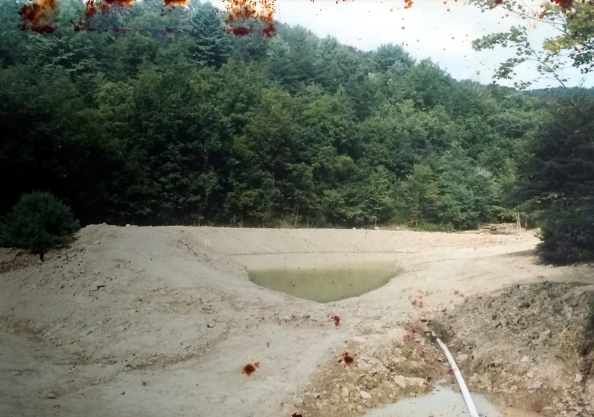 Image courtesy of Ann Wilken and Julian Woods Community
That was over 30 years ago, and now the pond is becoming over-crowded
with plant life, mostly the lilies. We’ve considered a few different ideas for clearing the water including lowering the water level temporarily to allow us to pull out as many lilies as we are able. But this has to be timed with the stream, when it is flowing strong enough to refill the pond when we are done. Recently two other local pond owners have told us that they have introduced Koi to their ponds to eat the algae and keep the lilies and perimeter plant growth under control. We pretty quickly decided to try this out. Kent and Robin made the trip to the supplier not far from us, and released six 10” Koi into the pond this past week. If they survive the winter and are not eaten by the other fish, we may try for some more next Spring.
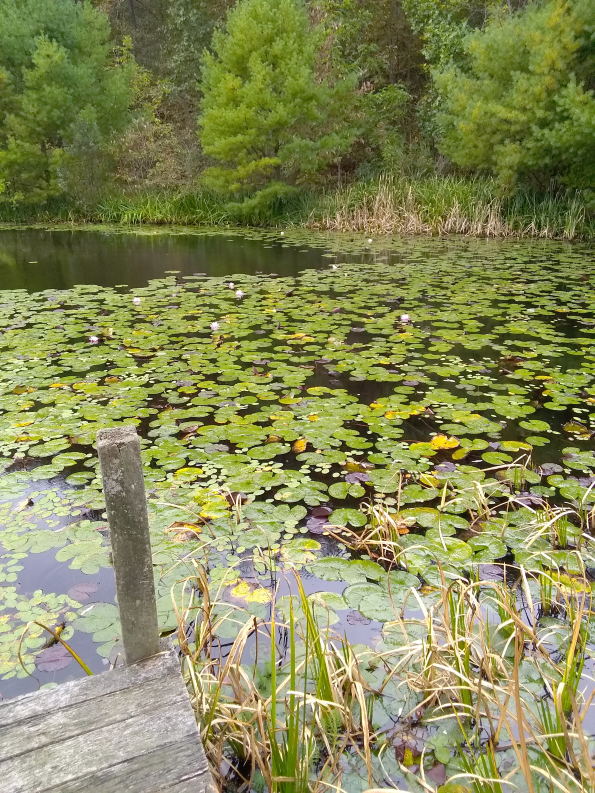 Image courtesy of Ann Wilken and Julian Woods Community
We’d love to hear from others with similar pond problems and pond solutions. You can reach us at abwilken0451@gmail.com.
|
|
|
A BOOK RECOMMENDATION
By Brenda Carr
WHITE RAGE: The Unspoken Truth of Our Racial Divide By Carol Anderson, Ph.D., Bloomsbury 2016
"From the end of the Civil War to our combustible present, an acclaimed historian reforms the conversation about race we must continue to have, chronicling the powerful forces that have long oppressed black progress in America." (from the inside flap) Carol Anderson published "WHITE RAGE" as Hillary Clinton's campaign sought to overcome the divisive and outright racist campaign of Donald Trump and his syncopates. Thanks to Cambridge Analytica, Putin and the Republicans that turned the Republican Party over to Trump and his allies, the progress she envisioned in her epilog "Imagine" never had a chance to take root. This book, however, should be required reading for every high school and college history (Western Civ.) class and anyone who thinks they are "colorblind," and not responsible for the injustices of their "ancestors." The scale of human depravity reported in her story of the treatment of Chattel Slaves, their descendants and all who are perceived as not-white, is chilling and revealing. I will never again brag about my abolitionists' ancestors association with Lincoln. Yes, they owned slaves, participated in the Underground Railroad and "freed" those slaves, but did they consider them their equals. I doubt that possibility. This period of our story, from the Civil War to the present as a story of "white rage" and its infection of our body politic with the displacement of chattel slavery into a "wage slavery" system through the segregation of blacks and "brown" minorities into segregated and underserved communities corralled by a punitive criminal justice system is revealed for all to see. This "original sin" must be acknowledged (i.e. known) before "repentance" or "forgiveness" can proceed to unite us in the battle for human (and humane) survival which will require both. |
|
|
BACK IN PRINT
By Bill Sharp
www.transitioncentre.org 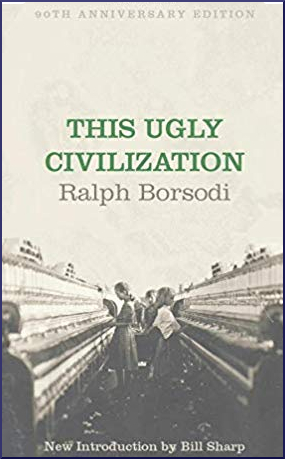 Ralph Borsodi's seminal book, This Ugly Civilization, is back in print. The book was first published in September 1929. This is a 90th Anniversary Edition (I think the fourth edition) beautifully typeset and produced by Kevin I. Slaughter. He also developed a web site to promote it. You can find the link to buy the book there. I consider This Ugly Civilization the foundation book of the School of Living. In it, Borsodi offered a thoughtful critique of urban industrial civilization, presented his alternative – a report on his highly successful homesteading experiment, and proposed an educational program to develop people's capacity for free and independent living. His publisher asked him for an expanded handbook on homesteading which came out as Flight From the City in 1933. He founded The School of Living the following year. I had the privilege to be invited to write the new introduction. In it I tell the story of how the School of Living unfolded from this book and where Borsodi's program could serve to address the emerging challenges of our day. Editor note: The 1929 edition of This Ugly Civilization by Borsodi is available as a pdf on the School of Living website in the publications section.
|
|
|
Seth Wheeler shares a personal reflection of community life in the article below, Hope for Community. You will want to follow the link to get the full post on our SOL website. Enjoy!
HOPE FOR COMMUNITY
By Seth Wheeler 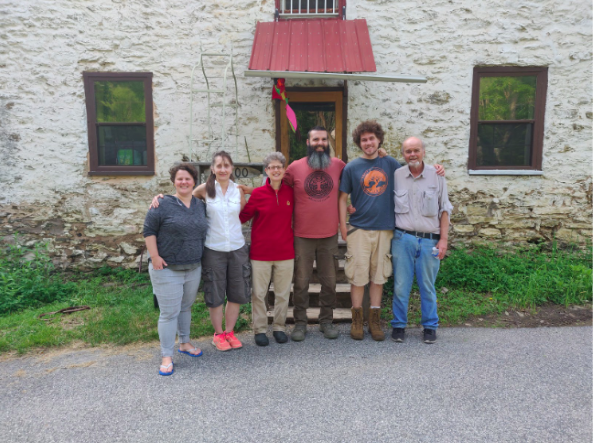 Image courtesy of Seth Wheeler
These cool fall mornings bring fond memories to mind; long mornings waiting for the school bus or woodland explorations, kicking leaves and building tree forts. Something about the dropping angle of the sun and the frenzied chirping of hungry birds seem to ease the worries from the heart. This is harvest time, ancient tradition teaches us to be grateful for what we’re able to reap and store, the fruit of our works.
These milder seasons around the equinoxes are also when farmers take up the most intense work of the season, discovering what went wrong and what went right with their crops. We all pray for abundance, but only the lean harvest offers insight on how to truly grow, how to better prepare for even more challenging seasons. When the coffers are overflowing, the motivation to increase production is drastically lower than that fiery and heroic adventure one must take when faced with natural disaster, job loss or any number of life shattering events. Sometimes the losses creep in slowly, like the shadow at dusk an infectious fungus can wipe out a crop before you ever see it. Sometimes that shadow is no spore or pest but fear itself; fear of failure, fear of rejection, fear of judgment, fear of loneliness or just plain fear in general. The effects can be catastrophic, explosively disastrous or incrementally implosive. If a business doesn’t meet it’s obligations, it’s production or sales goals, it goes bankrupt, unfortunately, we don’t have that same easy measuring stick in family or community, you can’t always quantify the catastrophe. When you can’t identify that destructive spore, how can you overcome it? Hope, truth, light and hard work. Community can serve its members by helping to remind each other of these powers we all have, the love we all possess can only serve to overcome the lean times, the losses and the learning opportunities. It could be argued that without community, without family, it can be nearly impossible to overcome some challenges. Read More… |
|
|
GARDEN PLANNING
by Michaelann Velicky
As the growing season slows down, Do you, like me, look over the garden and think of all the things that you wished you had done differently and promise yourself, "Next year…"? For StellaLou Farm, garden planning and record keeping are practices that need more attention.
When I talk to successful gardeners, I often ask about their methods. I am, consistently, told that garden planning and record keeping are critical to growing successful crops and managing workload. The thinking, the calculating, and the strategizing are done in winter so that during the height of the season, you "simply" follow the task list. Pam Dawling is a wonderful resource for gardeners and market farmers. I, recently, bought her book, Sustainable Market Farming. As you might suspect, her first chapter dives into the importance of garden planning, documentation, and review. Kelle from Ahimsa Village, generously, shared her tried and true methods: "I currently use three separate records plus a garden map/plan. In my main record I keep (or try to, I miss some activities) records of everything I do in the garden including planting and transplanting (what and where), thinning, fertilizing, covering/uncovering, insect/bird/mammal management, 1st harvest of most crops, etc. For crops like potatoes and garlic I record total harvest. I just realize I should be recording harvest for my pole beans but forgot. I have a separate record for anything I process (freeze, can, dry). With exception of garlic and potatoes I don't have a total harvest record for anything but I get a good idea about relative yields with the processing record. I used to keep weather records (temperature, rain, humidity, and general description of weather) in the main record. Now I keep that as a separate record. Mostly I use the records to keep track of when I plant different crops and to compare yields from year to year. Correlated with the weather records I get an idea of the impact of climate change." This information is gold to StellaLou Farm. Thank you, Kelle! We're on it! 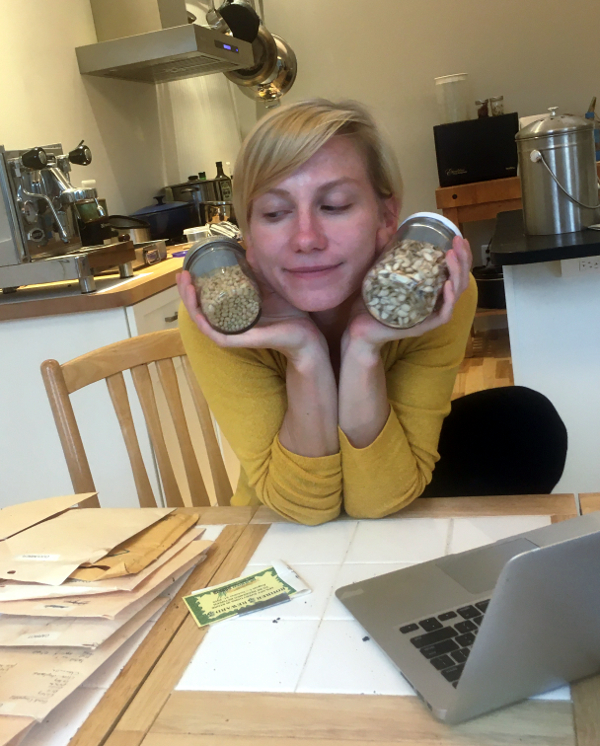 Image courtesy of StellaLou Farm
What are your strategies for planning and record keeping? I'd love to hear from you: mvelicky@schoolofliving.org
|
|
|
SOL RECOMMENDS:
|
|
|
MEMBERSHIP
To renew your membership or join School of Living, click on this link.
|